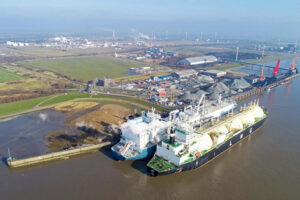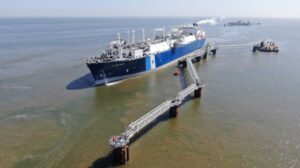Rising LNG demand and energy security concerns pushing global FSRU market to grow by $891 million up to 2028
The global floating storage regasification unit (FSRU) market size is forecast to increase in the 2024–2028 period, primarily driven by the units’ cost competitiveness, the need to stabilize oil prices, and the boost in the pursuit of liquefied natural gas (LNG) as a way to diversify the energy mix with low-carbon sources and strengthen energy security, based on a report by U.S.-based market research firm Technavio.

The research firm expects the FSRU market to grow at a compound annual growth rate (CAGR) of 8.09% in the estimated period, mainly because FSRUs can overcome fuel shortages as they mostly use hybrid vessels for the transportation of LNG worldwide, enabling the fuel to be transported quickly, which increases the rate of adoption.
This is particularly relevant in today’s landscape where LNG is considered a bridge fuel towards energy transition and a means of achieving energy security, despite some claims that an oversupply could be on the cards in the near future.
Related Article
Based on the data from the International Energy Agency (IEA), the cost of building an FSRU with all necessary facilities is 40%–50% lower than building an onshore LNG facility. This competitive advantage combined with the rising rate of adoption of clean fuels is expected to drive the market growth during the forecast period.
Following the crude oil market price fluctuations from 2017 to 2023, and especially the fall in crude oil prices in 2014 and 2020, many exploration and production (E&P) projects were stopped. However, the IEA’s data suggest the prices have stabilized, allowing E&P activities and natural gas production to resume.
The agency predicts that natural gas will account for over 25% of global energy demand by 2040, with an annual increase rate of 1.6%. Consequently, this is expected to fuel the expansion of the FSRU market as these vessels are seen as essential for importing natural gas in regions without pipeline networks. Their ability to increase storage capacity can also help the sector overcome its spatial constraints.
While minimizing land use is an upside, it comes with a downside – environmental concerns related to hydrocarbon emissions and potential pollution, which is incompatible with the global decarbonization and net-zero agenda. Furthermore, as LNG requires very low temperatures during transportation, high quantities of energy are used, which increases production costs.
Related Article
Another challenge is the rising number of alternatives, such as floating storage offloading (FSO), and floating production storage and offloading (FPSO) units, whose high adoption rate is expected to hinder the growth of the global FSRU market. While FSRUs represent an innovative solution in the offshore LNG market, the higher cost of additional equipment and safety measures limits their adoption compared to other LNG transportation methods, possibly restricting their widespread use.
Despite these challenges, energy players around the globe are stepping up their FSRU ante. While Italy’s Snam is expected to finish work on an FSRU destined for its Ravenna LNG terminal by the year’s end, France’s GTT was hired by HD Hyundai Heavy Industries to design tanks for an FSRU it is building for Japanese shipowner Mitsui O.S.K. Lines (MOL).
Related Article
-
Italian firm on track to bring FSRU for its LNG terminal online next year
Business Developments & Projects
On the other side of the globe, the Philippines’ First Gen handed out a contract to a subsidiary of Tokyo Gas to deliver 125,000 m3 of LNG to the FSRU BW Batangas moored at the First Gen Clean Energy Complex (FGCEC) in Batangas City.









